Most Asked Dogfighting FAQs Comprehensively Answered NOW!
Dogfighting Introduction.
Air combat, commonly referred to as dogfighting, is a form of aerial warfare in which two or more military aircraft engage in a close-range battle with the objective of shooting down the enemy aircraft. These dogfighting FAQs will enlighten you to what you need to do to be better.
The term “dogfight” originated from the practice of hunting wild game with dogs, where two or more dogs would engage in a close-range battle to capture the prey. Similarly, in air combat, pilots use their aircraft as weapons, trying to outmanoeuvre and outwit their opponents to gain an advantage in the fight.

Dogfighting has a long and storied history, dating back to the early days of aviation. During World War I, pilots engaged in dogfights using biplanes armed with machine guns. These early battles were often fought at low altitudes, with pilots using visual cues to track and engage their enemies. The advent of World War II brought new aircraft designs and technologies that made air combat even more challenging and deadly.
The introduction of jet engines and radar made it possible for pilots to engage in high-speed battles at much higher altitudes. Today, air combat remains an essential element of modern warfare. While advancements in missile technology have reduced the need for close-range dogfighting, it remains a vital skill for military pilots. In addition to its tactical importance, dogfighting has also captured the imagination of the public, inspiring countless movies, books, and video games.
The skills required for dogfighting are demanding, with pilots needing exceptional hand-eye coordination, quick reflexes, and a thorough understanding of aerodynamics and tactics. They must be able to fly their aircraft to its limits, while also maintaining situational awareness and communicating with their wingmen. A successful dogfighter must be able to think quickly and creatively, adapting to the ever-changing conditions of the battle.
- Latest CPU’s Available Now – Amazon.com
- Get a NEW GPU Best Performance – AMAZON.com
- Upgrade RAM Here today – AMAZON.com
- Prebuilt PC Options – AMAZON.com
Key Dogfighting Considerations

- What are the key tactics used in dogfighting with fighter jets?
- What are the best types of fighter jets for dogfighting?
- How important is pilot skill in dogfighting, compared to the capabilities of the aircraft?
- How do fighter pilots train for dogfighting situations?
- What are the most common mistakes made by fighter pilots during dogfights?
- What are some effective strategies for evading an enemy fighter during a dogfight?
- What are the best weapons and countermeasures to use in a dogfight?
- How important is situational awareness in a dogfight, and how can pilots maintain it?
- How do fighter pilots communicate with their wingmen during a dogfight?
- How do weather conditions affect dogfighting tactics and strategies?
There are so many great dogfighting FAQs today we will cover ten to help you get better in the air. Subjects covered in these dogfighting FAQs will cover a wide variety f questions for you to ingest.
What are the key tactics used in dogfighting with fighter jets?
Dogfighting is a term used to describe a type of air combat where two fighter jets engage in aerial combat with the objective of shooting down the other aircraft. There are so many dogfighting FAQs that Ones like tactics are requested so let’s answer the question. This type of combat requires a lot of skill and strategy, and pilots need to be well-trained and prepared to handle the high-speed manoeuvres and sudden changes in direction that occur during dogfights.
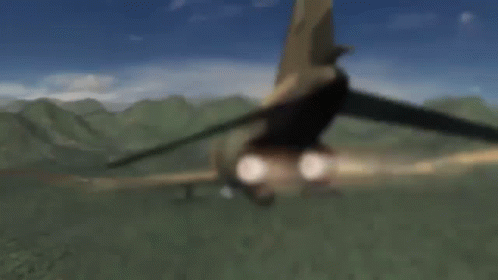
In this article, we will discuss some of the key tactics used in dogfighting with fighter jets.
- Energy management: One of the most important tactics in dogfighting is energy management. A fighter pilot needs to carefully manage their aircraft’s energy by balancing speed and altitude to gain a tactical advantage over the opponent. The pilot needs to use their aircraft’s capabilities to maximize energy, which is essential to executing offensive and defensive manoeuvres.
- Offensive tactics: In dogfighting, offensive tactics are designed to give the pilot a tactical advantage over the opponent. These tactics include attacks from different angles, high-speed passes, and firing of missiles at the enemy aircraft. One of the most effective offensive tactics is the use of surprise attacks, where the pilot can gain the element of surprise and catch the enemy off guard.
- Defensive tactics: In dogfighting, defensive tactics are designed to protect the aircraft from enemy attacks. These tactics include evasive manoeuvres, such as high-G turns, rolls, and loops, to evade incoming missiles and avoid the enemy aircraft’s line of fire. The pilot can also use chaff and flare countermeasures to disrupt the enemy’s missile guidance systems.
- Communication and teamwork: Communication and teamwork are essential in dogfighting. Pilots need to communicate effectively with their wingman and maintain situational awareness. This includes monitoring the position and movement of the enemy aircraft and coordinating attacks and defensive manoeuvres.
- Situational awareness: Situational awareness is the ability to gather and process information about the current situation and anticipate future events. In dogfighting, situational awareness is critical, as it allows the pilot to make informed decisions about offensive and defensive manoeuvres. The pilot needs to be aware of the aircraft’s speed, altitude, and position in relation to the enemy aircraft and the surrounding environment.
In conclusion, dogfighting with fighter jets is a complex and highly skilled form of aerial combat & I hope these dogfighting FAQs continue to help you.
Successful dogfighting requires a combination of energy management, offensive and defensive tactics, communication and teamwork, and situational awareness.
Fighter pilots need to be well-trained and prepared to handle the challenges of dogfighting, and these tactics are essential to achieving victory in aerial combat.
Best fighter jets for dogfighting? Dogfighting FAQs
When it comes to dogfighting, or aerial combat between fighter jets, there are several factors that come into play, including speed, manoeuvrability, and firepower. The best types of fighter jets for dogfighting are those that excel in these areas, allowing them to outmanoeuvre and outgun their opponents. In this blog post, we’ll take a answer some of the best fighter jets for dogfighting FAQs.
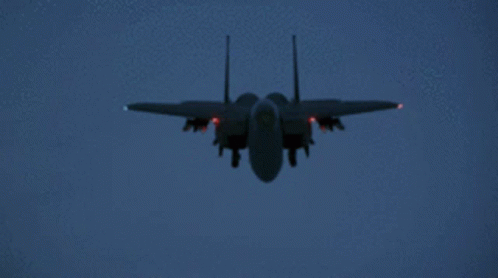
- F-22 Raptor: The F-22 is widely regarded as one of the best fighter jets in the world, and for good reason. It’s incredibly fast and manoeuvrable, with a top speed of over Mach 2 and the ability to make sharp turns at high speeds. It’s also equipped with advanced avionics and weapons systems, making it a formidable opponent in any dogfight.
- Eurofighter Typhoon: The Eurofighter Typhoon is a multirole fighter that excels in air-to-air combat. It’s incredibly agile and can perform tight turns and high-speed manoeuvres, thanks in part to its delta wing design. It’s also equipped with advanced sensors and weapons systems, including air-to-air missiles and a cannon.
- Sukhoi Su-35: The Su-35 is a Russian fighter jet that’s known for its exceptional manoeuvrability. It has thrust vectoring engines that allow it to make incredibly tight turns and perform complex manoeuvres, making it a difficult target for enemy pilots. It’s also equipped with a range of advanced weapons systems, including air-to-air missiles and a cannon.
- F-16 Fighting Falcon: The F-16 is a versatile fighter jet that’s used by air forces around the world. It’s highly manoeuvrable and can perform tight turns and high-G manoeuvres, making it a good choice for dogfighting. It’s also equipped with a range of weapons systems, including air-to-air missiles and a cannon.
In conclusion, the best types of fighter jets for dogfighting are those that are fast, manoeuvrable, and well-equipped with advanced weapons systems. The F-22 Raptor, Eurofighter Typhoon, Sukhoi Su-35, and F-16 Fighting Falcon are all excellent choices for pilots who need to engage in aerial combat. Ultimately, the best fighter jet for dogfighting will depend on a variety of factors, including the pilot’s skill, the mission objectives, and the capabilities of the opponent.
How important is pilot skill in dogfighting, compared to the capabilities of the aircraft?
Dogfighting, or air-to-air combat, is a high-stakes game that requires both the capabilities of the aircraft and the skills of the pilot. While having a powerful and technologically advanced aircraft is important, it is the pilot’s skill that ultimately determines the outcome of a dogfight. Skill cannot be discounted in these dogfighting FAQs because you can put the best pilot in the world in the poorest jet and they can still kill an enemy in a superior jet more often than not!
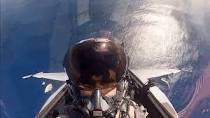
A skilled pilot can outmanoeuvre and outsmart their opponent, even if their aircraft is less advanced. They have the ability to read and predict their opponent’s moves and can use that knowledge to their advantage. In a dogfight, a pilot’s situational awareness is critical, as they must be able to quickly assess the situation and make split-second decisions.
However, having a technologically advanced aircraft can give a pilot an edge. Modern fighter jets are equipped with advanced sensors and avionics systems that can help pilots detect and track their targets, giving them a tactical advantage. Some aircraft are also designed specifically for air-to-air combat, with features like thrust vectoring and high manoeuvrability.
Ultimately, the combination of a skilled pilot and a capable aircraft is what makes for a successful dogfight. Without the necessary skills, even the most advanced aircraft can be taken down by a skilled opponent. Conversely, without a capable aircraft, even the most skilled pilot may struggle to gain the upper hand.
It’s worth noting that dogfighting has become less common in modern warfare, as long-range missiles and advanced air defence systems have made it difficult for aircraft to get close enough to engage in close-range combat. However, it remains an important skill for fighter pilots to master, as it is still a possibility in certain scenarios.
In conclusion, both pilot skill and the capabilities of the aircraft are important in dogfighting. While a skilled pilot can make up for a less advanced aircraft, having a technologically advanced aircraft can give a pilot an edge. In any case, it is the combination of that ultimately determines the outcome of a dogfight.
How do fighter pilots train for dogfighting situations?
Dogfighting is an aerial combat manoeuvre in which fighter planes engage in close-range aerial combat with one another. It requires a high degree of skill, agility, and tactical awareness. Fighter pilots undergo rigorous training to prepare them for these intense situations. The dogfighting FAQs in this blog including this question will no doubt make you better in DCS or BMS when you’re at the controls.
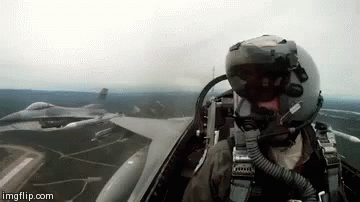
The training for dogfighting starts with a focus on mastering the basic flight manoeuvres. Fighter pilots learn how to fly in different conditions and how to perform basic aerial manoeuvres such as turns, rolls, loops, and dives. This training is crucial for building a solid foundation that they can build upon as they advance to more complex manoeuvres.
Once pilots have mastered the basics, they move on to more advanced training. They begin to train in mock dogfights where they practice engaging and outmanoeuvring other aircraft. These exercises typically take place in a simulator or a real aircraft that is equipped with sensors that can detect simulated gunfire and other weapons.
During these simulations, pilots learn to anticipate their opponent’s moves, fly close to other planes without colliding, and evade enemy fire. They also practice using different types of weapons and tactics, such as missiles and flares, to gain the upper hand in a dogfight. Pilots also learn to work as a team during these exercises. They learn how to communicate effectively with their wingman, how to coordinate attacks, and how to cover each other’s backs during a fight.
Overall, fighter pilots undergo extensive training to prepare them for dogfighting situations. The training is both physically and mentally demanding, requiring pilots to remain alert and focused while performing complex manoeuvres at high speeds. With the proper training and experience, fighter pilots can effectively engage in aerial combat and come out victorious.
- Joystick / HOTAS – AMAZON.com
- Rudder Pedals – AMAZON.com
- Throttle Quadrant – AMAZON.com
- Gaming Chair – AMAZON.com
- VR Headset – AMAZON.com
What are the most common mistakes made by fighter pilots during dogfights?
Dogfighting is an intricate and complex art that requires a combination of skill, training, and intuition. Fighter pilots must master numerous skills, including situational awareness, tactical manoeuvres, and weapons systems, to outmanoeuvre and defeat their opponents in the air. While training and experience can help mitigate the risks, dogfighting is still a high-stress, high-pressure environment where mistakes can prove costly. The dogfighting FAQs we cover here will help you understand and be able to improve your flying and limit your possible mistakes.
One of the most common mistakes made by fighter pilots during dogfights is getting fixated on the target. A pilot’s natural instinct is to keep their eyes on the enemy aircraft, but this can result in tunnel vision and a loss of situational awareness. When a pilot is fixated on the target, they may fail to detect other threats, such as incoming missiles or other aircraft that are approaching from a blind spot. To avoid this, fighter pilots are trained to scan the entire airspace regularly, keeping an eye out for any potential threats.
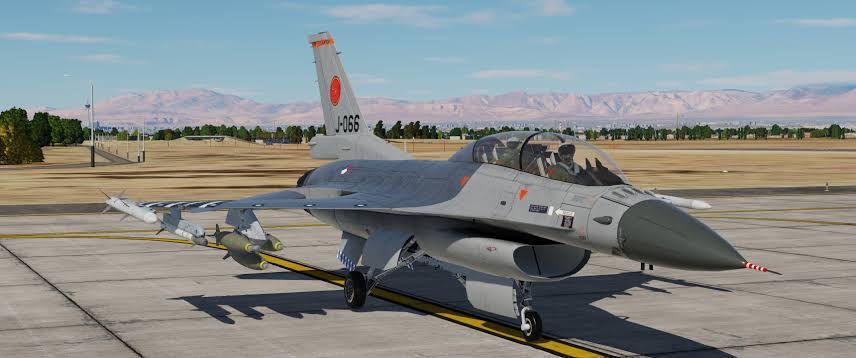
Another mistake that fighter pilots can make is becoming too aggressive. In the heat of the moment, it can be tempting to pursue an enemy aircraft relentlessly, but this can be dangerous. An overly aggressive pilot may put themselves in a vulnerable position, allowing the enemy aircraft to gain the upper hand.
In some cases, an enemy pilot may even use the pursuing aircraft’s momentum against them, making it easier to evade and escape. To avoid this, fighter pilots are taught to maintain a balance between aggression and caution, keeping an eye on their surroundings and assessing the situation before taking any action.
A third mistake that fighter pilots can make is failing to communicate effectively with their wingman. In dogfighting, teamwork is essential, and pilots need to work together to achieve their objectives. However, poor communication can lead to misunderstandings and mistakes that could prove disastrous. For example, if one pilot decides to pursue an enemy aircraft, they may leave their wingman exposed to other threats.
To avoid this, fighter pilots must communicate regularly with their wingman, using clear and concise language to convey their intentions and keep each other informed of any developments.
In conclusion, dogfighting is a challenging and demanding art that requires pilots to master a range of skills and techniques. While mistakes can happen, fighter pilots are trained to recognize and avoid common errors, such as fixation, aggression, and poor communication. By staying alert, working as a team, and maintaining situational awareness, fighter pilots can increase their chances of success in the dogfighting arena.
What are some effective strategies for evading an enemy fighter during a dogfight? Advanced Dogfighting FAQ Answers.
Dogfighting, or aerial combat, requires quick thinking, expert manoeuvring, and nerves of steel. Evading an enemy fighter can be the difference between life and death, so it’s important to have a few effective strategies up your sleeve. Here are some tactics that pilots have used successfully in dogfights throughout history:
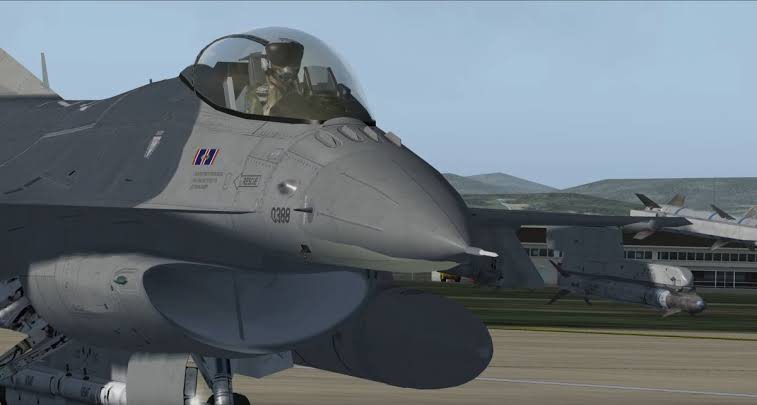
- Breakaway Manoeuvres: One of the most effective ways to evade an enemy fighter is to use breakaway manoeuvres. These are sudden turns or dives that you make to throw off your opponent’s aim and gain distance between you and them.
- Defensive Flying: Another effective tactic is to fly defensively. This means constantly changing direction and altitude to make it harder for your opponent to get a clean shot at you. Defensive flying is all about being unpredictable and making it difficult for the enemy to predict your next move.
- Energy Fighting: Energy fighting involves using the energy of your aircraft to gain an advantage over your opponent. This can be done by climbing or diving to gain altitude or speed, or by using your aircraft’s maneuverability to outmaneuver your opponent.
- Teamwork: If you’re flying with a wingman, teamwork is essential. Communication is key, and you should work together to set up flanking maneuvers or lure the enemy into a trap.
- Use Your Environment: Finally, use your environment to your advantage. Fly low over hills or mountains to break visual contact, or fly in and out of clouds to make it harder for the enemy to track you.
In the end, the key to evading an enemy fighter is to be creative, adaptable, and unpredictable. Keep your wits about you, and always be on the lookout for opportunities to gain the upper hand.
What are the best weapons and countermeasures to use in a dogfight? Dogfighting FAQs!
Dogfighting, or aerial combat between aircraft, has been a part of warfare since the earliest days of aviation. In a dogfight, pilots must rely on their skill and equipment to outmaneuver and outgun their opponents. In this dogfighting FAQs blog post, we’ll take a look at some of the best weapons and countermeasures to use in a dogfight.

Weapons:
- Guns: The primary weapon in a dogfight is still the aircraft’s guns. Machine guns and cannons can be mounted on the wings or nose of the aircraft and can be fired directly at the enemy.
- Missiles: Air-to-air missiles can be used to take down enemy aircraft from a distance. These missiles can be heat-seeking, radar-guided, or infrared-guided, depending on the type of missile and the target.
- Bombs: In some situations, dropping bombs on the enemy aircraft can be effective, especially if the enemy is flying low or slow.
Countermeasures:
- Chaff: Chaff is a cloud of tiny metallic or plastic pieces that can be released from an aircraft to confuse radar-guided missiles.
- Flares: Flares can be used to distract heat-seeking missiles by emitting a large amount of heat that the missile will follow instead of the aircraft.
- Electronic Warfare: Electronic warfare can be used to jam or spoof enemy radar and other electronic sensors, making it difficult for the enemy to track and target the aircraft.
In addition to these weapons and countermeasures, a skilled pilot can use tactics such as energy management, speed, altitude, and maneuverability to gain an advantage over the enemy. Dogfighting requires quick thinking, situational awareness, and a thorough knowledge of the aircraft’s capabilities and limitations.
In conclusion, dogfighting is a complex and dangerous endeavour that requires skill, courage, and the right equipment. By using the best weapons and countermeasures available, and employing effective tactics, pilots can increase their chances of survival and success in aerial combat.
How important is situational awareness in a dogfight, and how can pilots maintain it?
Situational awareness is critical in any aerial combat scenario, and dogfighting is no exception. The ability to gather, process, and comprehend the vast amount of information available in a dogfight can be the difference between life and death for a pilot.
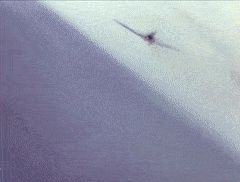
Maintaining situational awareness is not easy, and it requires a combination of training, experience, and the use of technology. Here are some tips that pilots can use to maintain situational awareness in a dogfight:
- Use your instruments: Modern fighter aircraft are equipped with advanced sensors and instruments that can provide critical information about the aircraft’s surroundings, including the position and movement of other aircraft. Pilots should learn to use these instruments effectively and use them to supplement their visual observations.
- Keep your head on a swivel: Even with the best instruments, there is no substitute for the pilot’s eyes. Pilots should continually scan the sky and keep their head on a swivel to maintain awareness of their surroundings.
- Communicate with your wingman: Dogfighting is often a team effort, and communication with your wingman is critical to maintaining situational awareness. Pilots should use their radios to communicate with their wingman and share information about the location and movement of enemy aircraft.
- Stay calm: In a high-stress situation like a dogfight, it’s easy to become overwhelmed and lose situational awareness. Pilots should stay calm and focused and avoid getting tunnel vision.
- Practice, practice, practice: Situational awareness is a skill that can be improved with practice. Pilots should train regularly in simulated dogfighting scenarios to hone their situational awareness skills.
In conclusion, situational awareness is a critical skill for any pilot engaged in dogfighting. By using their instruments, keeping their eyes on the sky, communicating with their wingman, staying calm, and practicing regularly, pilots can maintain situational awareness and increase their chances of survival in a dogfight.
How do fighter pilots communicate with their wingmen during a dogfight?
During a dogfight, fighter pilots communicate with their wingmen through a variety of methods, including radio communication, hand signals, and pre-planned tactics.
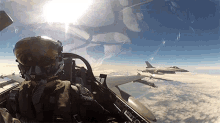
Radio communication is the primary method of communication for fighter pilots during a dogfight. Each pilot is equipped with a headset and microphone, allowing them to communicate with their wingmen and ground control. The radio frequency used for communication is typically pre-determined and can be changed in case of interference or eavesdropping by the enemy.
Pilots use clear and concise language to relay critical information such as enemy positions, aircraft damage, and ammunition status. In addition to radio communication, pilots also use hand signals to communicate with their wingmen. These signals are used when radio communication is not possible or when pilots need to communicate quietly without giving away their position.
Common hand signals include pointing to indicate the location of an enemy aircraft or forming a fist to signal to hold fire. Pre-planned tactics are another way fighter pilots communicate with their wingmen during a dogfight. Before engaging in combat, pilots will develop a plan of attack that includes specific maneuvers and signals to be used during the fight.
This allows pilots to quickly and efficiently communicate with their wingmen without the need for verbal or visual cues.
In conclusion, fighter pilots use a variety of methods to communicate with their wingmen during a dogfight, including radio communication, hand signals, and pre-planned tactics. Effective communication is essential for pilots to work together and overcome their opponents, and they are trained to do so even under the high-pressure and dynamic conditions of aerial combat.
How do weather conditions affect dogfighting tactics and strategies?
Dogfighting is a highly complex and challenging form of air combat that requires exceptional skills and strategies so in these dogfighting FAQs we will answer this question. The weather conditions play a critical role in the planning and execution of dogfighting tactics. Pilots must constantly adapt to changing weather patterns to ensure they maintain their tactical advantage and outmaneuver their opponents.
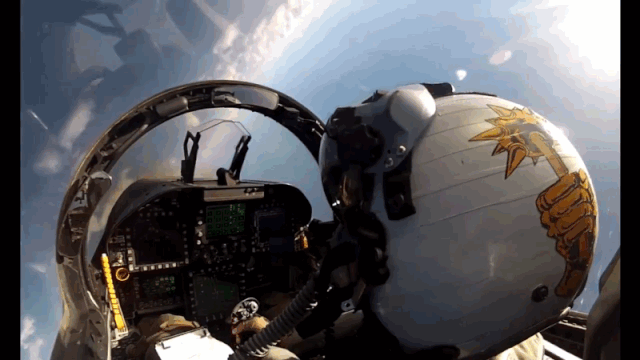
One of the most significant factors that influence dogfighting in different weather conditions is the visibility. In clear weather, pilots have a more extended range of visibility, allowing them to spot their opponents from further away. This situation enables them to plan their attack and make use of their aircraft’s strengths to take down their opponents.
However, when the weather is hazy or cloudy, visibility is significantly reduced, making it challenging for pilots to locate their enemies. In such situations, pilots have to rely on their instincts and quick thinking to outmaneuver their opponents.
Another critical weather factor that affects dogfighting is wind. Wind speed and direction can significantly impact the maneuverability of the aircraft. Crosswinds, for instance, can make it challenging for pilots to maintain their aircraft’s balance and stability, making them vulnerable to attacks. In such situations, pilots may have to rely on their aircraft’s aerodynamic properties to maintain their course and attack their opponents.
Clouds and precipitation also affect dogfighting strategies. In cloudy conditions, pilots may use the clouds as cover to approach their opponents undetected or evade their opponents’ attacks. Rain and snow can also impact the aircraft’s performance and visibility, making it challenging to carry out maneuvers and target their opponents accurately.
In conclusion, weather conditions have a significant impact on dogfighting tactics and strategies. Pilots must be trained to adapt to changing weather patterns and make quick decisions to maintain their tactical advantage. Understanding the weather’s influence on dogfighting can help pilots anticipate potential challenges and make the necessary adjustments to achieve victory in air combat.
Dogfighting FAQs Conclusion.
It becomes super obvious right from the beginning that fighter pilots have an incredible amount to cope within combat and just daily flying! This I hope will give the want to be fighter pilots and the DCS/BMS fighter pilots something to consider and help improve their flights.
Author

Brendon McAliece (Aka Gunnie) is a military veteran with 23 years working on Jet Fighters, their weapons systems and ejection seat/module systems as well as munitions and R&D. Involved with flight simulation since the 1980s, he has flown all the major flight simulators over the years.
He is an Australian expat who has lived in Malaysia, UK, Saudi Arabia and more recently Thailand. He is a multi-lingual blogger who loves to share his life experiences here on LetsFlyVFR.com and DreamingGuitar.com, with his lifestyle and Travel experiences Blog plus his Dreaming Coffee website.
Learn More @
DreamingGuitar.com – DreamingCoffee.com – LetsFlyVFR.com
( HOME – BLOG – SHOP – ABOUT )
As an Amazon affiliate I may benefit from qualifying sales.

